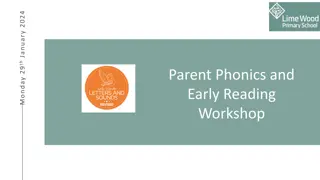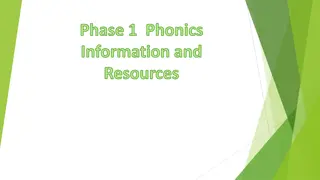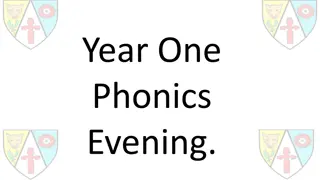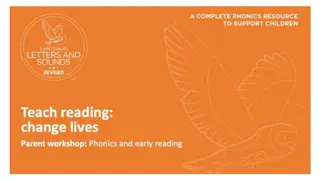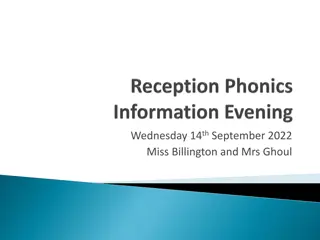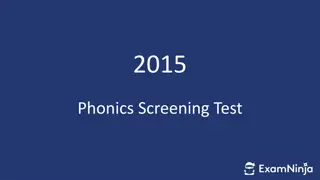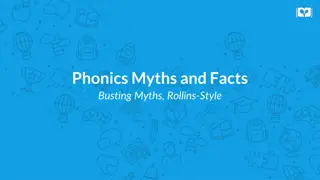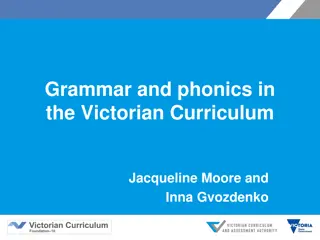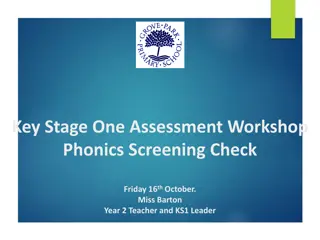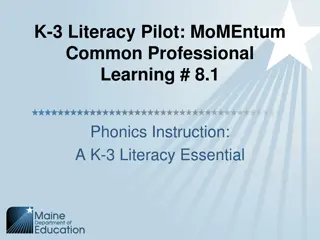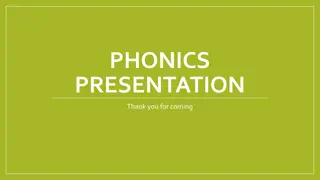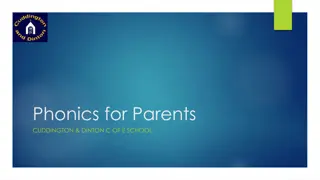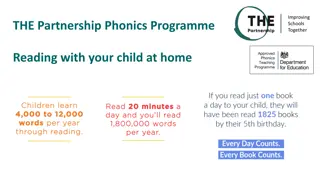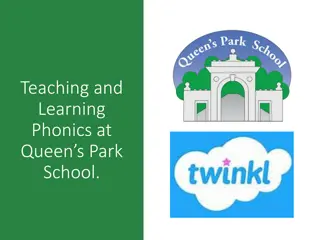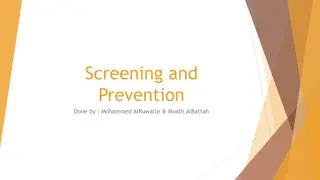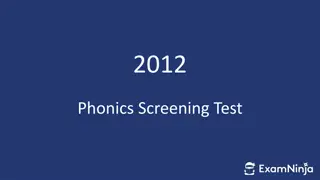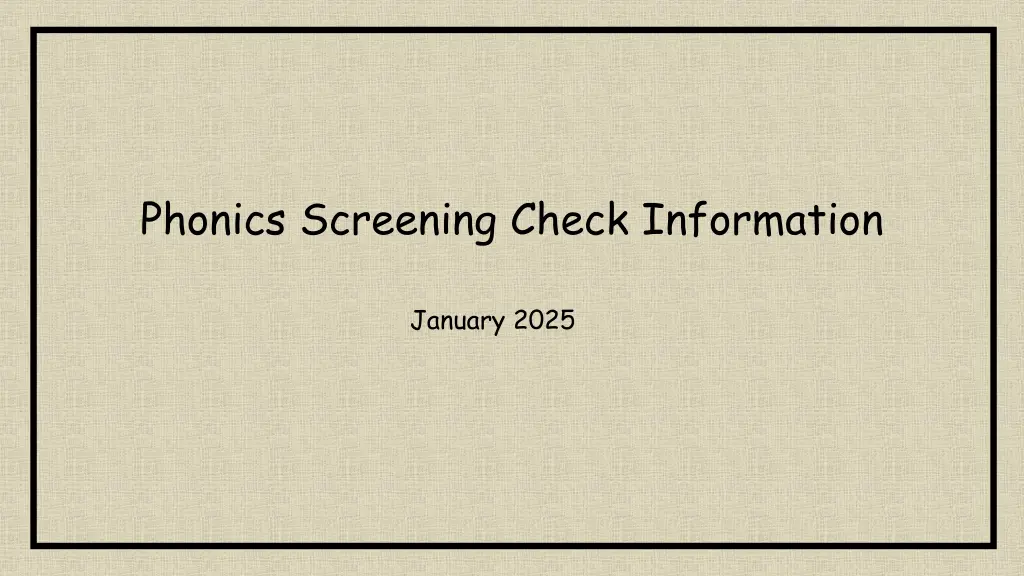
Effective Phonics Screening Check Information and Guidelines
"Learn about phonics screening check, introduction to phonics, segmentation and blending skills, vocabulary, and the purpose of the phonics screening check. Find out what happens during the check and when it will take place."
Download Presentation

Please find below an Image/Link to download the presentation.
The content on the website is provided AS IS for your information and personal use only. It may not be sold, licensed, or shared on other websites without obtaining consent from the author. If you encounter any issues during the download, it is possible that the publisher has removed the file from their server.
You are allowed to download the files provided on this website for personal or commercial use, subject to the condition that they are used lawfully. All files are the property of their respective owners.
The content on the website is provided AS IS for your information and personal use only. It may not be sold, licensed, or shared on other websites without obtaining consent from the author.
E N D
Presentation Transcript
Phonics Screening Check Information January 2025
Introduction to Phonics Children begin to learn phonics (sounds) in early years. There is a heavy emphasis on oral blending. Once children begin learning sounds, these sounds are used orally to identify and make words. They will then begin to learn the letters which make each of the sounds and these are used to read and spell words.
Skills of segmentation and blending. Blending phonemes in reading. Segmenting phonemes in spelling (using their phonic knowledge i.e. sounding out, to spell). Identifying sounds in words. Recognising common spellings of each phoneme (grapheme) and applying the correct grapheme to a word. Grapheme-phoneme correspondence (GPCs) matching phonemes to graphemes and vice versa.
Vocabulary Digraph: two letters making one sound cow Trigraph: three letters making one sound night Split digraph- 2 vowels with a consonant in between. spine (i_e) trade (a_e) phone (o_e) Phoneme: A unit of speech (often referred to as a sound .) Grapheme: A group of letters that represent a sound (phoneme). For example ea , ee are graphemes of the same sound.
Introduction to the Phonics Screening Check: Statutory check since 2012 for all Year 1 pupils. The Rose Report in 2006 recognised that children need to have both good word recognition and good oral language comprehension in order to read. Good word recognition is dependent on decoding rapidly and then this will support the development of good comprehension which will continue to develop throughout their lives. The phonics screening check is designed to confirm whether individual children have learnt phonic decoding and blending skills to an appropriate standard.
What happens? The check consists of 40 words that the children must read aloud to a teacher. 20 words are real words and 20 are pseudo ( alien ) words. For each word, children must decode effectively to read it accurately. They are allowed to decode each sound and then blend together to read the whole word or read the word on sight. The check will take approximately 10 minutes per child, although all children are different and will complete the check at their own pace. We have been using past screening checks throughout the year so children are already used to the assessment format.
The check will be take place during the week commencing Monday 9th June 2025. The expectation for meeting the standard has been 32 out of 40 since 2012. We do not find out the threshold until after all screening checks have been completed. You will be notified about your child s score in their end of year report. Any children identified as not meeting the expected standard will be given extra support. If your child does not reach the expectation, they will have another opportunity to resit in the Summer term of Year 2.
How to help Read daily at home. Always encourage the children to look for graphemes (digraphs, trigraphs, split digraphs) in words. If your child is struggling to decode a word, help them by encouraging them to say each sound in the word from left to right. Blend the sounds by pointing to each one. Next move your finger under the whole word as you say it. Encourage children to annotate the soundbuttons within a word. Discuss the meaning of words if your child does not know what they have read.
Phonics is a key component when learning to read, but it is not the only aspect. Childrens comprehension and understanding is also vital. Do not forget that the ultimate goal is to help children become confident readers so please continue to read purely for enjoyment! www.phonicsplay.co.uk - Online games. www.phonicsbloom.com - Online games www.ictgames.com - Online games. www.topmarks.co.uk - More online games available as well as games to support other areas of the curriculum. https://www.gov.uk/government/collections/national-curriculum-assessments-practice- materials#phonics-screening-check-resources - Past phonic checks.



